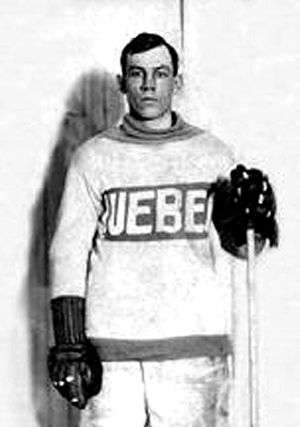CCM Tacks - Part 1 of 3

Having introduced its Automobile Skate (so-named because it was made with the same steel as its Russell motor car) in 1905, CCM dominated the Canadian skate market unti 1927 when the Western Shoe Co. of Kitchener, Ontario, owned by the Bauer family, began to produce skates using their own boots and blades from the Starr Manufacturing Co. Introduced as the first skate in Canada to leave the factory with the blade already attached to the boot, the Bauer Supreme had become the country’s fastest selling skate.
It was a challenge to which CCM wasted little time in responding. Looking for a boot to match the Bauer Supreme, CCM turned to the shop of Manitoba shoe-maker George E. Tackaberry (1874 – 1937).
![]()
Born in Dresden, Ontario, Tackaberry had apprenticed as a shoemaker in Ontario before heading to <?xml:namespace prefix = st1 />

After carefully measuring Hall’s feet, Tackaberry used a combination of innovative design and meticulous craftsmanship to come up with an answer to the player's problem. Using moisture-resistant kangaroo hide that wouldn’t stretch, Tackaberry lowered the top of the boot nearly two inches and added a snugly-fitting reinforced heel and toe as well as an improved arch support and thicker tongue.
Said to “fit like a glove,” word of the boot quickly spread among the players in Tackaberry’s hometown including up-and-comers Lester Patrick and Art Ross. Patrick, a gangling youth from Westmount, Quebec had come to Brandon in 1904 after starring for McGill University and became Tackaberry's second customer. Meanwhile Art Ross, who joined the Brandon Elks in 1905, quickly followed suit. Before long word of the high quality skate was the talk of dressing rooms across
The mate for the Tackaberry boot arrived in 1934 when CCM general manager J.W. Gibson announced the company was producing a new “heat-treated” blade made of
“We’ve been working on this new skate for the past three years,” explained Gibson, “and we are sure that CCM is making a real contribution to the hockey world with the ‘Prolite.’ As a result of the extensive tests we have made we know that the new ‘Prolite’ is the strongest tube skate CCM has ever produced.”
To unveil its new Prolite blade, CCM enlisted the help of NHL star Charlie Conacher.

“Being leading scorer is partly luck, I guess, but skates have a lot to do with it. Split seconds count, so you must have skates that are light and lively enabling you to skate fast, shift quickly or stop instantly. CCM’s Prolite helps to make these things possible,” declared Conacher.
With its combination of Prolite blade and Tackaberry boot CCM had found its answer to the Bauer Supreme and before long its CCM Tacks returned the company to the forefront of skate manufacturing in




